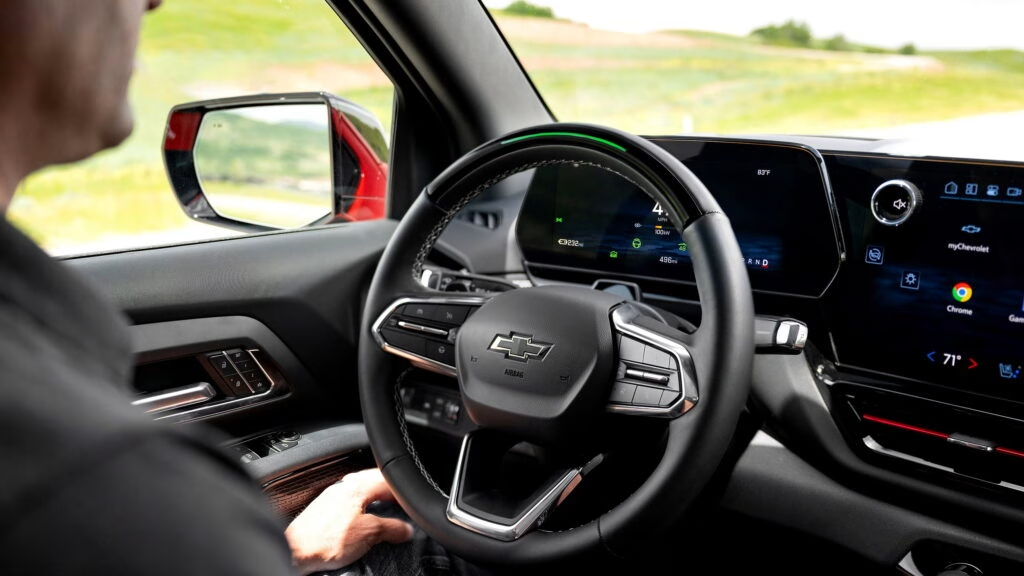Why Are Modern SUVs Harder to See Out Of Than Their ’90s Counterparts?
Ever get behind the wheel of a new SUV and feel like you’re peering out of a fortress? You’re not imagining things. According to a recent Insurance Institute for Highway Safety (IIHS) study, visibility in some modern SUVs has dropped by more than 50% compared to models from the 1990s. That’s not just a minor annoyance—it’s a trend with real consequences for everyone on the road.
What’s Driving the Drop in Visibility?
The IIHS research team took a deep dive into 17 vehicles across six popular nameplates, including the Ford F-150, Chevrolet Suburban, Honda Accord and CR-V, Toyota Camry, and Jeep Grand Cherokee. By comparing each generation from 1997 to 2023, they found a stark pattern: SUVs have become much harder to see out of, while sedans have changed very little.
The main culprits? Tall hoods and oversized side mirrors. These design choices are often made for style, aerodynamics, or crash safety, but they come at a cost. The higher and bulkier the front end, the more it blocks a driver’s view of what’s immediately in front of the vehicle—especially children, cyclists, and shorter adults. Big mirrors, while helpful for seeing behind, can create massive blind spots at the corners.
How Bad Has Visibility Gotten?
Let’s talk numbers. In the late ‘90s, drivers of a Honda CR-V could see about 68% of the area within 10 meters ahead of them. Fast forward to the 2022 model, and that number plummets to just 28%. The Chevrolet Suburban tells a similar story: visibility dropped from 56% in 1997 to 28% in 2023. The Ford F-150, already challenged in this area, lost another 17% of its forward visibility over the same period.
Meanwhile, sedans like the Accord and Camry barely budged—visibility decreased by less than 8%, a change so small it’s within the margin of error. So, if you feel like you can see better out of your old sedan than your neighbor’s new SUV, you’re probably right.
Are These Changes Linked to Rising Pedestrian and Cyclist Deaths?
Here’s where things get serious. Over the past 25 years, pedestrian fatalities have jumped 37%, and cyclist deaths are up 42%. While there are many factors at play—distracted driving, urban sprawl, and more—the IIHS points to declining vehicle visibility as a likely contributor.
Taller, blunter vehicles not only make it harder for drivers to spot people near the car, but they also tend to cause more severe injuries in a collision. In fact, previous IIHS research shows that SUVs and pickups are two to three times more likely to kill a pedestrian in a crash compared to smaller cars. It’s a sobering statistic that puts the design trade-offs into sharp focus.
Why Haven’t Sedans Suffered the Same Fate?
It’s not just nostalgia—sedans really do offer better visibility. Their lower hoods and slimmer pillars mean drivers have a clearer view of the road and sidewalk. The IIHS study found that the Accord and Camry, for example, saw negligible changes in visibility over the past two decades.
This matters because, as SUVs and pickups have come to dominate the American car market, the overall visibility for drivers has taken a hit. Becky Mueller, IIHS Senior Research Engineer, notes that if these findings hold true across more models, declining visibility could be compounding the dangers already posed by larger, heavier vehicles.
Is There a Solution on the Horizon?
Automakers are starting to pay attention. Some are experimenting with slimmer pillars, better camera systems, and even transparent hood technology to help drivers see what’s hidden from view. But these features are still rare, and nothing beats good old-fashioned visibility.
For now, the best thing drivers can do is stay aware of their vehicle’s blind spots—especially when maneuvering in parking lots or near crosswalks. If you’re car shopping, take a test drive and pay close attention to what you can (and can’t) see from the driver’s seat. Sometimes, the safest choice isn’t the biggest or boldest vehicle on the lot.
What Should Drivers and Designers Take Away From This?
The big takeaway? Vehicle safety isn’t just about crash ratings or high-tech features—it’s about the basics, like being able to see what’s right in front of you. As SUVs and pickups get bigger and bolder, it’s more important than ever for designers to balance style and safety. And for drivers, a little extra caution and awareness can make all the difference. Start with one change this week—maybe it’s adjusting your seat, double-checking your mirrors, or simply slowing down in busy areas. You’ll likely spot the difference by month’s end.

